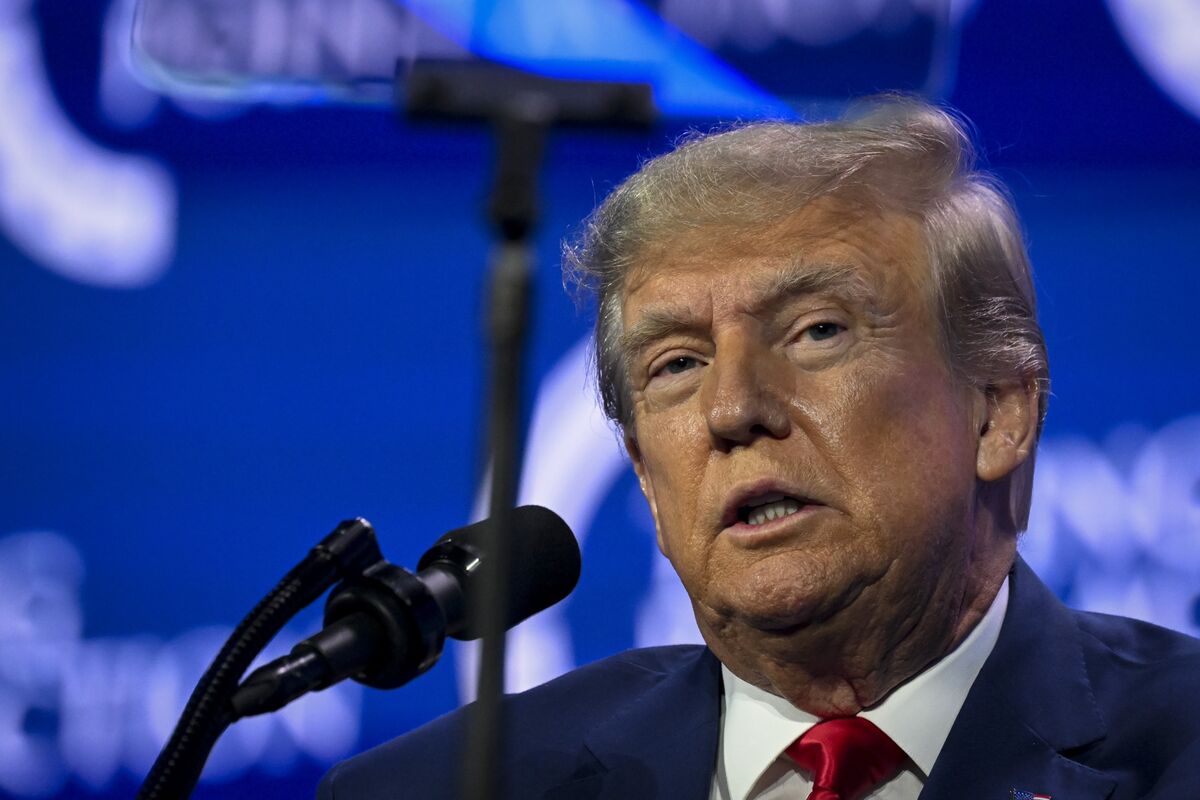Harvard And The Trump Administration: A $1 Billion Funding Battle

Table of Contents
The Roots of the Conflict
The conflict between Harvard and the Trump administration stemmed from a confluence of factors, primarily focused on scrutiny of Harvard's substantial endowment and allegations of discriminatory admissions practices.
Scrutiny of Harvard's Endowment
The Trump administration expressed concerns about the size of Harvard's massive endowment, questioning whether its vast resources were being used effectively and equitably, particularly regarding financial aid policies.
- Specific criticisms: The administration suggested that Harvard's endowment could be better utilized to reduce tuition costs and increase financial aid for students, arguing that the university wasn't doing enough to make education accessible to low-income students.
- Policies targeted: The administration's scrutiny focused on Harvard's need-blind admissions policy and its financial aid programs, questioning whether these policies were truly equitable and benefiting all students.
- Arguments regarding fair access: The administration argued that Harvard's wealth, coupled with its admissions policies, hindered fair access to higher education for students from less privileged backgrounds. They implicitly suggested that a portion of the endowment should be re-allocated to improve affordability.
Allegations of Discrimination
A significant element fueling the Harvard-Trump funding dispute were allegations of discrimination against Asian-American applicants in Harvard's admissions process.
- Summary of the lawsuit(s): Students, backed by advocacy groups, filed lawsuits alleging that Harvard's holistic admissions process discriminated against Asian-American applicants by penalizing them for traits deemed "positive" in other applicants.
- Key arguments from both sides: Harvard defended its holistic review, emphasizing the importance of considering a wide range of factors beyond test scores and GPA. The plaintiffs argued that this system disproportionately disadvantaged Asian-American applicants.
- Legal implications: The Supreme Court's eventual ruling in Students for Fair Admissions, Inc. v. President & Fellows of Harvard College significantly impacted affirmative action in higher education, setting a legal precedent with nationwide ramifications.
The Role of Federal Funding
The conflict extended to federal funding streams crucial to Harvard's research and operations.
- Types of federal funding at stake: This included substantial research grants from agencies like the National Institutes of Health (NIH) and the National Science Foundation (NSF), impacting various departments and research initiatives.
- Potential impact on Harvard's research capabilities: Reduced or threatened federal funding could have significantly hampered Harvard's capacity for groundbreaking research and development.
- Broader implications for other universities: The administration's actions sent a clear signal to other universities, raising concerns about the potential for increased political interference in research funding and academic freedom.
Key Players and Their Positions
The Harvard-Trump funding battle involved numerous key players with distinct positions.
Harvard University's Response
Harvard University strongly defended its admissions policies and its use of its endowment.
- Key figures at Harvard involved: This included Harvard's President, its legal team, and various faculty members involved in defending the university's policies.
- Strategies employed by the university: Harvard engaged in extensive legal proceedings, public relations campaigns, and outreach efforts to counteract the administration's criticisms.
- Public statements made by the university: Harvard released numerous statements emphasizing its commitment to diversity, academic excellence, and its responsible management of its endowment.
The Trump Administration's Stance
The Trump administration maintained its stance on reviewing university endowments and challenging admissions policies.
- Key figures in the administration involved: Key figures within the Department of Education and the Department of Justice played significant roles in shaping the administration's approach.
- Statements and actions taken by the administration: The administration's actions included investigations, public statements criticizing Harvard, and implicit threats regarding federal funding.
- Potential political motivations: Critics argued that the administration's actions were politically motivated, aiming to appeal to a specific segment of the electorate and influence the higher education landscape.
Other Stakeholders Involved
Various other stakeholders contributed to the complexities of the situation.
- Examples of supporting or opposing organizations: Advocacy groups supporting affirmative action and those challenging it played crucial roles. Other universities also observed the situation closely, concerned about potential ramifications for their own institutions.
- Their actions and involvement: These organizations engaged in lobbying efforts, public statements, and legal support.
- Their influence on the outcome: The collective actions of these stakeholders contributed to shaping public opinion and influencing legal proceedings.
The Aftermath and Long-Term Effects
The Harvard-Trump funding battle left a lasting impact on higher education.
Outcome of the Legal Battles
The Supreme Court's ruling in Students for Fair Admissions, Inc. v. President & Fellows of Harvard College significantly altered the landscape of affirmative action in college admissions.
- Summary of court decisions: The court ruled against Harvard's admissions program, significantly limiting the consideration of race as a factor in college admissions.
- Impact of the rulings: The ruling has had broad implications for university admissions policies nationwide, affecting the diversity of student bodies across the country.
- Lasting legal precedents set: The decision set a significant legal precedent, changing the legal framework surrounding affirmative action in higher education.
Changes in University Policies
Harvard, along with other universities, had to adapt to the new legal landscape.
- Specific policy changes: Universities adjusted their admissions policies to comply with the Supreme Court ruling, re-evaluating the role of race in the admissions process.
- Reasons for the changes: These changes were necessitated by the legal ruling and the desire to avoid future legal challenges.
- Impact on students and faculty: The changes impacted students' admissions prospects and created uncertainty and discussion amongst faculty regarding diversity initiatives.
Broader Implications for Higher Education
The Harvard-Trump funding dispute had broader implications for the relationship between universities and the federal government.
- Changes in government regulations: The dispute highlighted the potential for increased government scrutiny of university practices, particularly regarding funding and admissions policies.
- Impact on future funding decisions: The dispute raised concerns about the potential for politicization of federal funding decisions, jeopardizing research funding and academic freedom.
- Changes in the political landscape surrounding higher education: The conflict significantly influenced the political discourse surrounding higher education, highlighting the tension between government oversight and academic autonomy.
Conclusion
The Harvard-Trump funding battle, involving a disputed $1 billion in potential funding, represented a significant clash between a prestigious university and the federal government. The dispute involved extensive legal challenges, highlighted concerns about university endowments, affirmative action, and federal funding practices. Key takeaways include the financial stakes involved, the legal and political dimensions of the conflict, and its lasting impact on the landscape of higher education, particularly regarding affirmative action and the relationship between universities and the government. Stay informed about this crucial battle and its lasting impact on higher education funding. Continue your research into the complexities surrounding the Harvard-Trump funding dispute.

Featured Posts
-
 Russias Renewed Offensive In Ukraine Following Easter Ceasefire
Apr 22, 2025
Russias Renewed Offensive In Ukraine Following Easter Ceasefire
Apr 22, 2025 -
 Analyzing Trumps Trade Policies Challenges To American Financial Supremacy
Apr 22, 2025
Analyzing Trumps Trade Policies Challenges To American Financial Supremacy
Apr 22, 2025 -
 Ukraine Faces Brutal Russian Air Barrage As Us Urges Peace Negotiations
Apr 22, 2025
Ukraine Faces Brutal Russian Air Barrage As Us Urges Peace Negotiations
Apr 22, 2025 -
 Saudi Aramco And Byd Partner To Develop Innovative Ev Technologies
Apr 22, 2025
Saudi Aramco And Byd Partner To Develop Innovative Ev Technologies
Apr 22, 2025 -
 Saudi Aramcos Collaboration With Byd To Advance Electric Vehicle Technology
Apr 22, 2025
Saudi Aramcos Collaboration With Byd To Advance Electric Vehicle Technology
Apr 22, 2025
